Posts Tagged ‘legion’
The Dos and Don’ts of Needle-Drops
September 4, 2019DO: Use well-known songs in unexpected ways that still resonate with the original intent.
Recorded pseudonymously under the Derek & the Dominos moniker, “Layla” is Eric Clapton’s finest moment as a songwriter — an admittedly low bar to clear, since nearly all his best stuff was written by Jack Bruce, George Harrison, or JJ Cale, and also Duane Allman’s contribution to the song should not be underestimated. But still! It’s an outpouring of unrequited love for Pattie Boyd, the wife of his best friend and frequent collaborator Harrison, a way for this guy to reforge his broken heart into a merciless series of interlocking riffs and shout-sung choruses. It concludes with a movement that’s as gentle as the body of the song is frenzied, though it’s no less desperate-sounding for that.
Naturally, Martin Scorsese used it to soundtrack the discovery of half a dozen dead bodies.
Why does it work in GoodFellas? Because it gets right at the heart of the mournful, elegiac feel of the original without simply rehashing its overt emotional content. No one is heartbroken over finding poor Frankie Carbone frozen solid inside a meat truck, except perhaps Mrs. Carbone. But there’s still a sense that something has been lost, that the promised happy ending will never arrive.
More than that, “Layla” plays the same role in Clapton’s career that the murders that result in this sequence play in the career of Robert De Niro’s Jimmy Conway. The song is Slowhand’s masterpiece, and the Lufthansa heist, literally the biggest robbery in American history at the time, was Jimmy the Gent’s. Both Jimmy and Eric were at the top of their very different games here.
Put it all together and it’s a complex, captivating song choice that elevates both the scene it accompanies and the song itself, without the former relying on the latter to do all the dirty work. Scorsese’s library is full of this kind of music cue —as is GoodFellas itself.
SEE ALSO:
• Fargo, “War Pigs” by Black Sabbath
• American Crime Story: The Assassination of Gianni Versace, “Easy Lover” by Philip Bailey and Phil Collins
This one was months in the making: I wrote about how and how not to use music cues in TV and movies for Vulture.
“Legion” thoughts, Season One, Episode Eight
April 5, 2017“Don’t be afraid to care,” advises the Pink Floyd singer-guitarist David Gilmour in the prog-rock titans’ dreamy anthem “Breathe.” It’s a signature track on “The Dark Side of the Moon,” the perpetually best-selling concept album about modern life and mental illness that has soundtracked many a dorm-room bull session and chemically enhanced “Wizard of Oz” screening.
And given the propensity of “Legion” to make subtext text, I probably shouldn’t have been so surprised that the show would use this jaw-droppingly literal music cue for a pivotal scene in its season finale. Why not use a song with the lyric “All you touch and all you see is all your life will ever be” for an astral-plane confrontation in which David Haller’s life literally flashes before his eyes? Why not mesh the lyrics’ fatalistic take on the inescapable nature of death with a sequence in which David discovers how lethal it would be to free himself from the grasp of his nemesis, the Shadow King? Why not cap off a show renowned for its surreal, spacey visuals and structure with a song that comes pre-loaded with four and a half decades of psychedelic nostalgia?
The answer is right there in Gilmour’s line “Don’t be afraid to care.” Creator Noah Hawley and company crafted a show that stood out against its drab and unadventurous superhero peers, to be sure, and maybe that’s good enough. But it could have been great with a little more willingness to avoid the obvious, to go for magic rather than parlor tricks, to not use one of the most famously trippy songs in the history of rock ’n’ roll to tell the audience, “Wow, man — trippy, isn’t it?” A little more care is exactly what this episode, and the show in general, really needed.
I reviewed the season finale of Legion for the New York Times last week. I didn’t like the finale, or the season. I’ve seen semi-convincing arguments that the show is enjoyable when looked at as a silly fun superhero show with some unusual visual flair, but as that’s neither how it was sold nor, quite clearly, what its creators intended it to be, they must remain only semi-convincing.
They Are ‘Legion’: Tracking the Superhero Show’s Key Horror References
March 30, 2017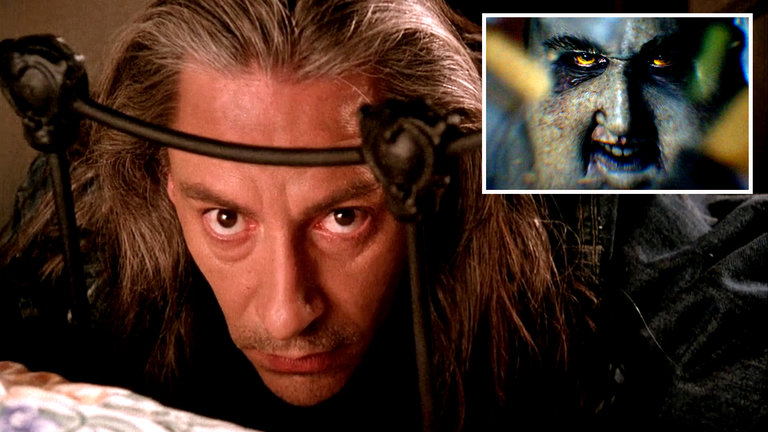
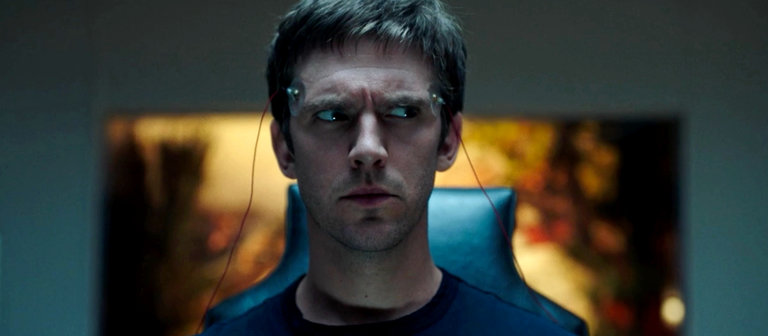

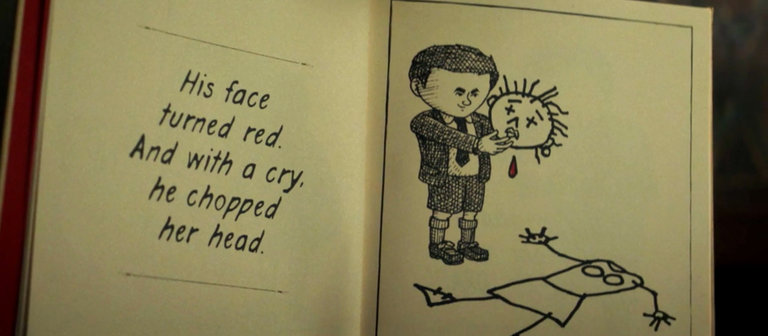
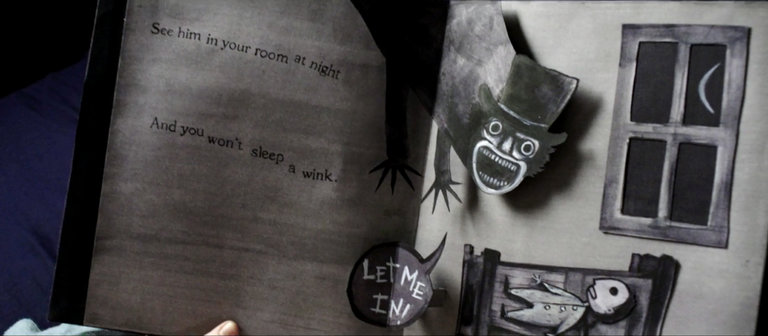
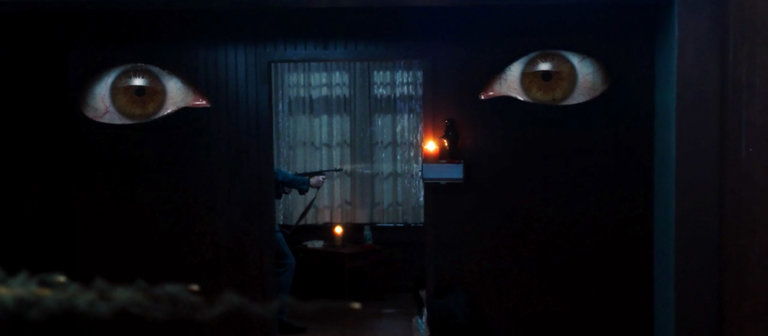
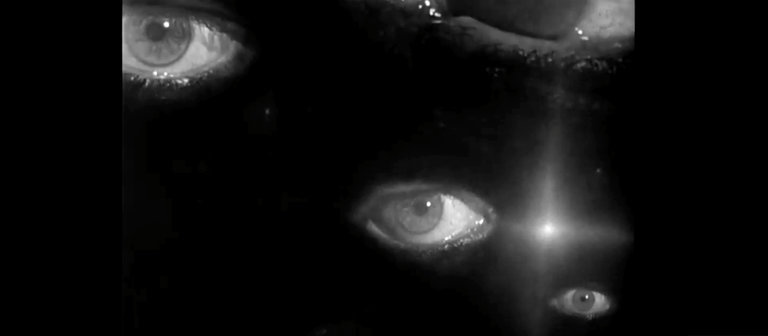

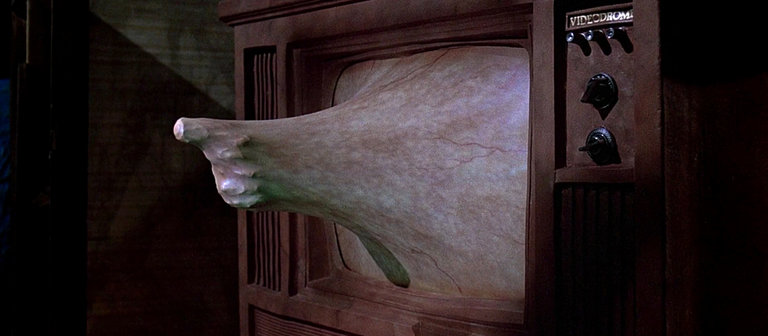
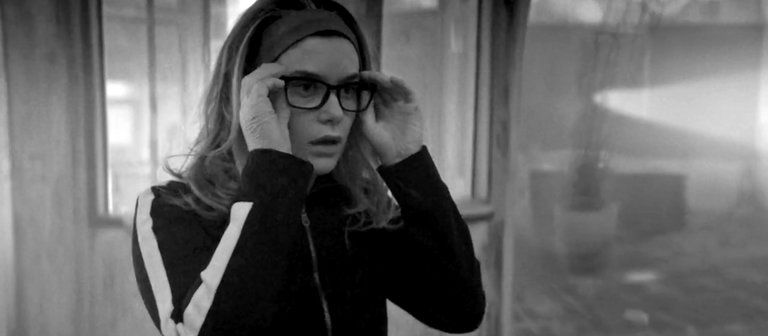

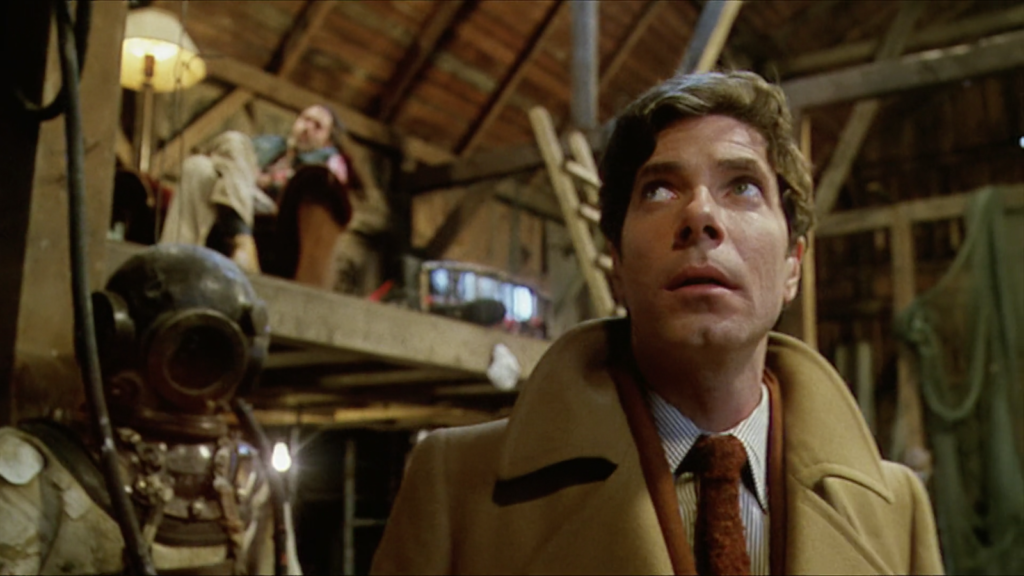
While Lynch gets the “Legion”-related headlines, another director named David seems to have left an even deeper mark. That would be David Cronenberg, who made a name for himself with a series of body-horror films that depicted the disturbing interplay between mind and matter, often with a conspiratorial backdrop of sinister secret agencies or killer corporations out to harness psychic power for their own ends.
“Legion” paints in shades of Cronenberg’s “Videodrome,” with its pulsating inanimate objects; “Shivers,” with its parasite imagery; “The Brood,” with its story of a powerful telepath under the care of a manipulative therapist (played by Oliver Reed, who may have lent both his name and his machismo to the guru figure Oliver Bird); and most especially “Scanners,” with its all-out war between rival psychic factions and a protagonist who’s telepathically tormented by the voices in his head. (“Scanners” also features a blink-and-you’ll-miss-it appearance from a very familiar-looking deep sea diver suit).
I wrote about David Cronenberg, David Lynch, and Legion’s other major horror influences for the New York Times. I have my beefs with Legion, but it’s porting its horror references into a whole different genre, as opposed to Stranger Things, which is just reheating them in the microwave and trying to pass of leftovers as a fresh-cooked dish.
“Legion” thoughts, Season One, Episode Seven
March 24, 2017Fortunately for David, diagnosis is nine-tenths of the cure. Now that he knows the source of his sickness, he’s able to shake it off and break through the barriers of his mind. With a little help from his mutant friends, he shuts down the hospital hallucination they’ve all been experiencing, seizes control of his own body, subdues the Shadow King, stops the bullets fired at him and Syd mid-flight and lives to fight government mutant-hunters another day. Simple, really!
No, seriously. The real secret of “Legion” is that it is a simple story, when all is said and done. Unlike, say, “Westworld,” none of the show’s countless Easter eggs, deliberate details and plot-twist trickery are essential to understanding the story. They’re aesthetic elements, not narrative ones; they exist not to convert the show into a puzzle-box but to make it an objet d’art, successfully or not. The simplicity of David’s origin and of his nemesis, as revealed in this episode, should make that clear. (Even a passing knowledge of the Marvel comics upon which the show is based — in which the writer Chris Claremont established the founder of the X-Men, Professor Charles Xavier, as David’s father and cocreated Farouk as one of their most powerful enemies — would have made it clear to a sizable chunk of the audience already.)
But while this simplicity allows “Legion” to cut through the Gordian knot of needlessly byzantine plotting that has plagued other genre shows of recent vintage, the blade is double-edged. Lacking narrative necessity, the show’s stylistic flourishes are free to sink or swim on their own. By that standard, they too often hit bottom.
The climax of tonight’s episode is a case in point. It’s an all-roads-converge kind of deal, in which Syd and Kerry’s battle with Farouk’s alter ego Lenny in the hospital simulation; Cary, Melanie and Oliver’s struggle to shield Syd’s and David’s bodies from the bullets in the time-frozen real world; and David’s attempt to psychically shatter the doors of his mind-prison all sync up successfully at the last second, saving their skins and stopping the bad guys simultaneously.
But all that action should be enough to stand on its own without the cutesy context the filmmakers provide. What is gained by having the fight play out like a silent movie, shot in black and white with dialogue printed as intertitles and Lenny gussied up in Charlie Chaplin’s Little Tramp meets Johnny Depp’s Edward Scissorhands drag? Why is the musical accompaniment an EDM version of Ravel’s “Boléro”? Irony has its place in the frequently too portentous superhero subgenre, but here it undercuts the tension and terror without providing much compensatory value.
I reviewed this week’s penultimate episode of Legion for the New York Times. This show isn’t the worst thing on TV or anything like that, but at this point I am truly stunned that anyone thinks it’s great and am starting to mistrust critics who allege that it is.
“Legion” thoughts, Season One, Episode Six
March 20, 2017Yet for all its intelligent design, the episode still feels as stuck in limbo as its characters. At no point are we in any doubt as to the nature of the situation: The devil with the yellow eyes has used David’s telepathic brain to construct a mental prison for him and his friends. We know they’re not crazy. We know their therapist is really their captor. We know the asylum in which they’ve been stowed is a simulacrum of the one David escaped in the pilot. We even know some of the dialogue they’re speaking, since it’s a deliberate repeat from scenes in that first episode. The only mystery is how they’ll break free, and since there are two episodes to go, that they will break free is a given. So it doesn’t take long for the novelty to wear off — and for the same weightless unreality that a dimly cognizant Syd complains to Dr. Busker about to begin taking hold of the viewer as well. Given the momentum the show had built as David gained control of his powers and then had them violently seized by his nemesis, devoting a full episode to this sense of stasis is a real shame.
It could be worse, however, at least if the ways in which the show really cuts loose in this episode are any indication. In a gravely miscalculated musical interlude, the devil-Lenny cavorts around David’s memories in a leotard and fishnets to the tune of Nina Simone’s “Feeling Good.” The song’s recent fate as a weight-loss jingle was bad enough, but to see it reduced to the soundtrack for a psychic parasite’s bump-and-grind — occasionally shot in silhouette against monochromatic red, like a James Bond title sequence — is somehow even more dispiriting, doubly so given the showrunner Noah Hawley’s impeccable use of found music in his other FX vehicle, “Fargo.” Like the easy allegory of the entire asylum-limbo story line, it’s a case of infatuation with form impeding function.
I reviewed last week’s Legion for the New York Times. More on this show soon.
“Legion” thoughts, Season One, Episode Five
March 9, 2017Like the personalities inside the mind of David Haller, the superhero and horror genres coexist in a way that’s difficult to untangle. Superman, the ur-superhero invented by the Jewish-American creative team of Jerry Siegel and Joe Shuster, has often been linked by scholars (though never by Siegel and Shuster themselves) to the myth of the golem. (“Frankenstein” author Mary Shelley is said to have been inspired by golem as well, although she never said so herself.) The mild-mannered scientist Bruce Banner turns into a raging behemoth as the Incredible Hulk, an echo of Dr. Jekyll and Mr. Hyde. Some heroes have powers that are outright demonic in nature, from Etrigan the Demon to the flaming-skull cyclist, Ghost Rider. “Blade,” the 1998 film about a vampiric hunter of the undead was the key precursor to the modern era of superheroic pop-culture hegemony.
And we haven’t even begun counting the villains, a rogues’ gallery of grotesques who evoke virtually every monster and murderer from myths and movies alike. None, of course, is more prominent than the Joker, Batman’s arch-nemesis, whose permanent grin was drawn directly from the expressionist silent horror film “The Man Who Laughs.”
In other words, the swashbuckling and world-saving are nice and all, but sometimes a good superhero story just wants to scare the pants off you.
“Legion” thoughts, Season One, Episode Four
March 2, 2017The director Larysa Kondracki knows how to open an episode of television. On “Fifi,” the stellar late-season episode of “Better Call Saul” she helmed last year, she started of with a continuous shot of a smuggler’s truck weaving its way across the border that lasted over four minutes. This was just the start of a tour-de-force hour, in which Kondracki framed actor Rhea Seehorn’s starry-eyed attorney Kim Wexler like an ecstatic saint and Jonathan Banks’s sad-eyed killer Mike Ehrmantraut like the subject of a chiaroscuro portrait by a Dutch master. She seemed to intuit and internalize the already impressive visual palette established by showrunners Vince Gilligan and Peter Gould, then surpass it.
In that respect, lightning just struck twice. On this week’s episode of “Legion,” Kondracki used her considerable talents to fulfill the promise of creator Noah Hawley’s iconoclastic but inconsistent pilot episode and its subsequent installments. Funnily enough, she did so with another multiminute opening shot. But instead of a swooping drone-cam drive-along with a drug-runner’s 18-wheeler, it was a woozy in-and-out close-up of a paunchy middle-aged mutant in a leisure suit, staring into the camera and breaking the fourth wall.
The mutant in question is Oliver Bird (Jemaine Clement, half of the folk-comedy duo Flight of the Conchords), the comatose husband of the mutant underground leader, Melanie (Jean Smart). Looking right into our eyes, he stumbles his way through a monologue about the two kinds of stories parents tell their children: fairy tales designed to uplift them with empathy, and cautionary tales meant to cow them with fear. “Good evening,” he says. “We are here tonight to talk about violence, or maybe human nature … ” He then backtracks. “We are here to talk about human nature.” Later, he overrules himself. “We are the root of all our problems,” he says, adding loftily, “Violence, in other words, is ignorance.” He then promises a five-act play (there are five episodes of “Legion” remaining) in which our hero, David Haller, will discover just what kind of story he’s in.
Whether it’s Oliver’s very ’70s leisure suit, his direct address to the audience, or an overall sense that suddenly this show, y’know, knows what it’s doing, this episode is the first time “Legion” has felt in the same league as the magisterial second season of Hawley’s “Fargo.” That period-piece gang-war epic was television at its most cinematic, a blend of operatically high dramatic stakes and equally operatic visual and sonic spectacle. In this case, the throwback references — jazz and the Kinks on the soundtrack, antiquated vinyl and reel-to-reel playback technology depicted with fetishistic reverence — are just the tip of the iceberg. (Semi-literally, given the frozen purgatory in which Oliver and David find themselves imprisoned.) Now, with Kondracki’s steady hand at the tiller, Hawley’s new series finally feels as substantial and assured as its predecessor.
I reviewed last night’s Legion for the New York Times. Kondracki’s a hell of a talent. She makes it look not just easy but logical.
“Legion” thoughts, Season One, Episode Three
February 27, 2017The biggest tell in this week’s episode of “Legion” isn’t a line of dialogue or a plot development: It’s a window. Specifically, it’s a circular windowpane crisscrossed with an X — the X-Men logo familiar to any superhero fan. During a pivotal conversation between David Haller and his mutant minders, in which he asserts his will to plow forward with his mental training in order to find his kidnapped sister, the window frames his head like a halo, his face directly in front of the spot where the diagonal lines meet. We may never get a more tangible connection between “Legion” and the (sorry) legion of Marvel mutant movies that has led to the impending release of “Logan,” the sad-old-man swan song for the X-Men’s breakout character, Wolverine.
But this single Easter egg serves as a symbol for the whole episode, which sees David take charge of his “treatment” and force his new mutant family to burrow deep into his brain in order to unearth his buried memories — and, they hope, rescue his sister from the evil mutants who have captured and tortured her. After two scatterbrained episodes in which the show simultaneously attempted to establish its ostentatious visual aesthetic and its overcomplicated space-time-contiuum-shifting story line, the show now seems ready to get on with the business of making this superhuman a superhero.
I reviewed last week’s Legion for the New York Times. A step in the right direction. That said, the work Larysa Kondracki does directing this coming Wednesday’s episode makes it the show people said it was from the beginning. Hoo boy, just you wait.
“Legion” thoughts, Season One, Episode Two
February 17, 2017“And so we ran on, into Summerland, and the place they said did not exist. And all the while, wolves were at our heels. Black masks, boots, and the one they call the Eye. We had come to do the work that must be done. To strip ourselves of the fog of the Life Before.” The second episode of “Legion” opens less with narration than with an incantation — prose calculated to conjure up a sense of wonder and terror straight out of a Galadriel speech in “The Lord of the Rings.”
To a limited degree, the show is capable of wonder and terror alike. Thanks in large part to the quiet and confident performances of Jean Smart and Jeremie Harris as Melanie Bird and Ptonomy Wallace, David Haller’s sojourn in the mutant refuge called Summerland does have that adept-in-training vibe vital to the origin stories of so many heroes, from Bruce Wayne to Arya Stark. And the continued presence of “the devil with the yellow eyes,” the corpulent demon who growls and grins at the periphery of the narrative, indicates that this is a series that could scare the pants off us if it so desired.
Yet there’s something that feels gimmicky, even chintzy, about the show’s manipulation of space, time, audio and video — the very stylistic innovations that seemed to set it apart from the superhero pack.
A quick cut during a flashback to one of David’s therapy sessions, for example, seems at first like just a way to represent his jitteriness. But later in the episode we learn it’s “real” — an actual glitch in his memory, a time jump created by his brain to hide something disturbing. We’re meant to get a little intellectual jolt out of this — “Ohhh, so that’s what that was!” — and we do … but it’s ultimately as insubstantial as a sugar rush.
I reviewed the second episode of Legion for the New York Times. It’s early and I’m in the liking-things business so I’m ready to be wrong about this, but this doesn’t feel like a terribly promising show to me at this point.
“Legion” thoughts, Season One, Episode One
February 13, 2017Take one of Hollywood’s most lucrative franchises. Combine it with one of the breakout auteurs of the Peak TV era. Drop it in the middle of a very crowded, yet largely undistinguished, field of competitors. “Legion,” the stylistically bold new X-Men spinoff from the “Fargo” showrunner, Noah Hawley, is designed to cause a sensation. Given the superhero genre’s odd combination of cultural omnipresence and cinematic anemia, it’s hard for it not to.
For all their reliance on feats of derring-do, superhero films and TV shows are, creatively speaking, a risk-averse lot. Since director Bryan Singer’s first “X-Men” film inaugurated the genre’s pop-culture hegemony nearly 17 years ago, precious little variety in tone or technique has been permitted by the major spandex factories.
Marvel, home of The Avengers, relies on a house style that coasts on the charisma of its attractive casts but has all the visual and sonic flair of an ibuprofen commercial. Its rival, DC, switched from making sometimes dull movies for smart teenagers (Christopher Nolan’s “Dark Knight” trilogy) to often dull movies for dumb ones (Zack Snyder’s Superman/Batman films and the egregious “Suicide Squad”). On television, “Marvel’s Agents of S.H.I.E.L.D.” and especially producer Greg Berlanti’s various DC properties have some zip, but no more genuine ambition than a syndicated ’90s action series. Marvel’s Netflix series are a step in the right direction. “Daredevil,” “Jessica Jones” and “Luke Cage” take relative risks with their moody visual palettes and their pairings of strong leads with idiosyncratic enemies who function like coprotagonists.
So there’s some precedent for “Legion,” the new superhero-ish series tangentially tied to the X-Men franchise from the writer, director and showrunner Noah Hawley. But for its true antecedents you have to search further back in the superhero timeline, to Lorenzo Semple Jr.’s stylish and self-aware “Batman” series from the late ‘60s. Or you could simply look at Hawley’s previous act of televised alchemy: “Fargo,” an anthology series in which the Coen Brothers’ Midwestern-noir classic is used as a springboard for a bold, bloody, often beautiful homage to their entire oeuvre. Perhaps in a desire to transform Hawley into an auteur-impresario in the style of Ryan Murphy or Louis C.K., FX, their shared network, tapped him to guide their all-important first foray into pop culture’s most lucrative zone.
In “Legion,” Hawley takes pages from his own “Fargo” playbook. The ostentatious use of classic rock on the soundtrack, scene and spatial transitions that call attention to themselves with graphic design or camera trickery, the sense (borrowed from the Coens) that reality is a sheet of thin ice that could crack and immerse you in the chaos beneath at any moment. It’s as fearless a creative statement as the genre has seen since Tim Burton’s original “Batman” movie in 1989. Whether it’s successful is yet to be decided.
I reviewed last week’s premiere of Legion for the New York Times, where I’ll be covering the show all season. Visually and tonally it was sharp; script-wise it was creaky as heck.
